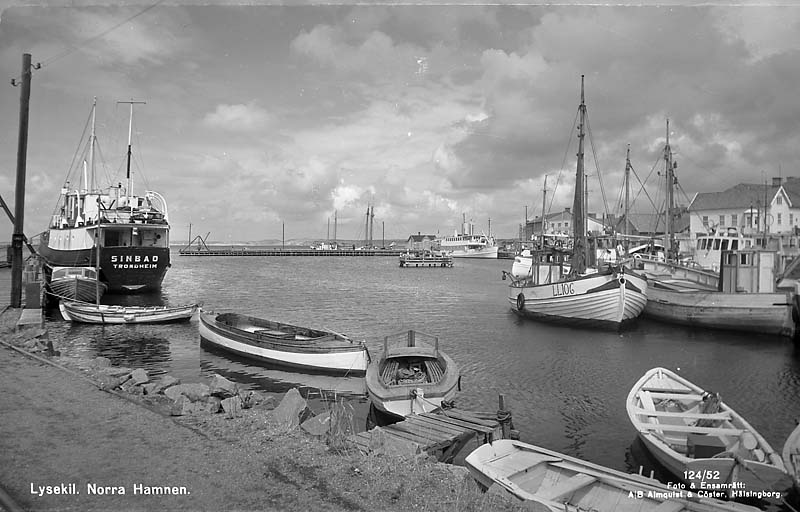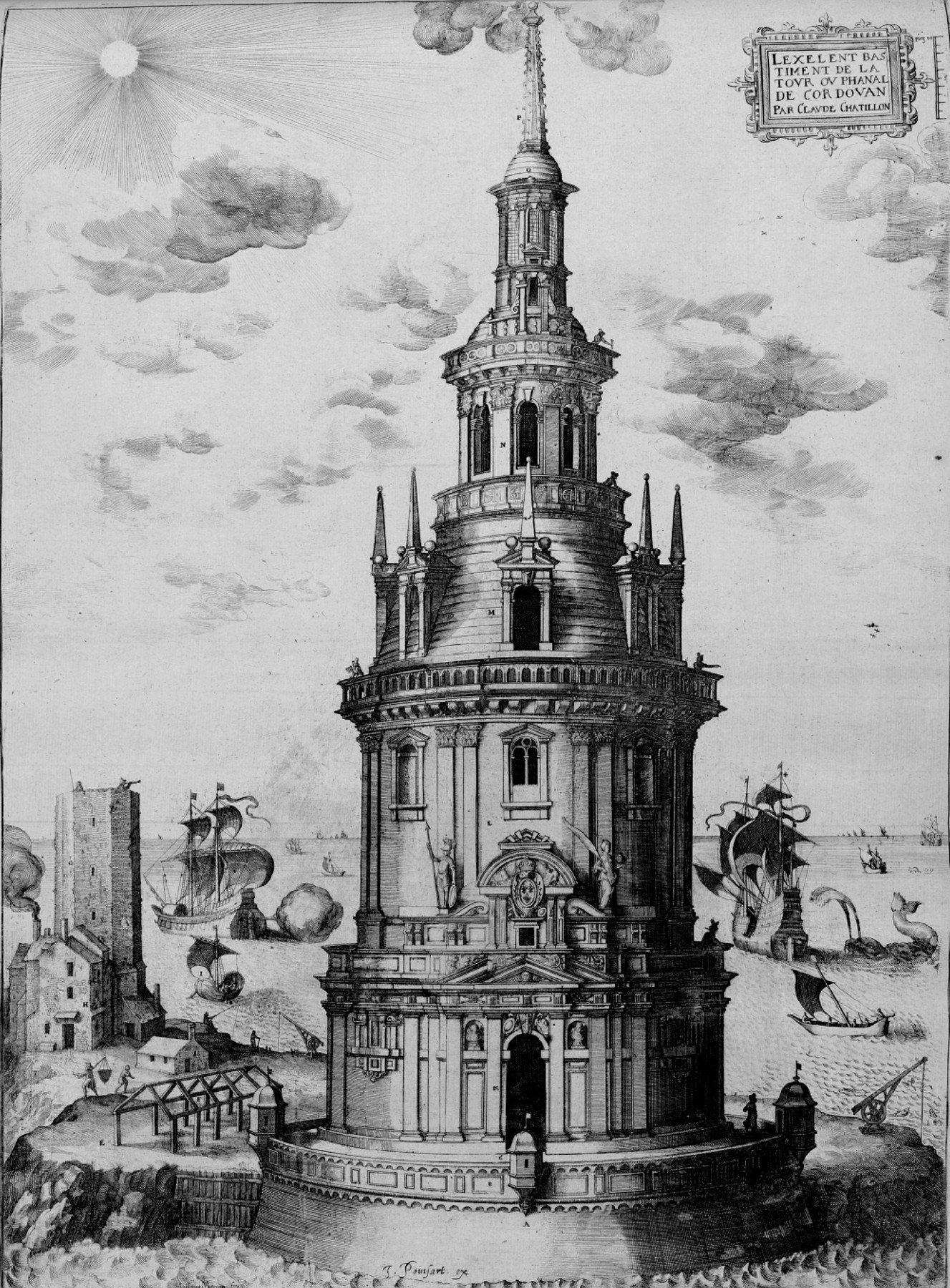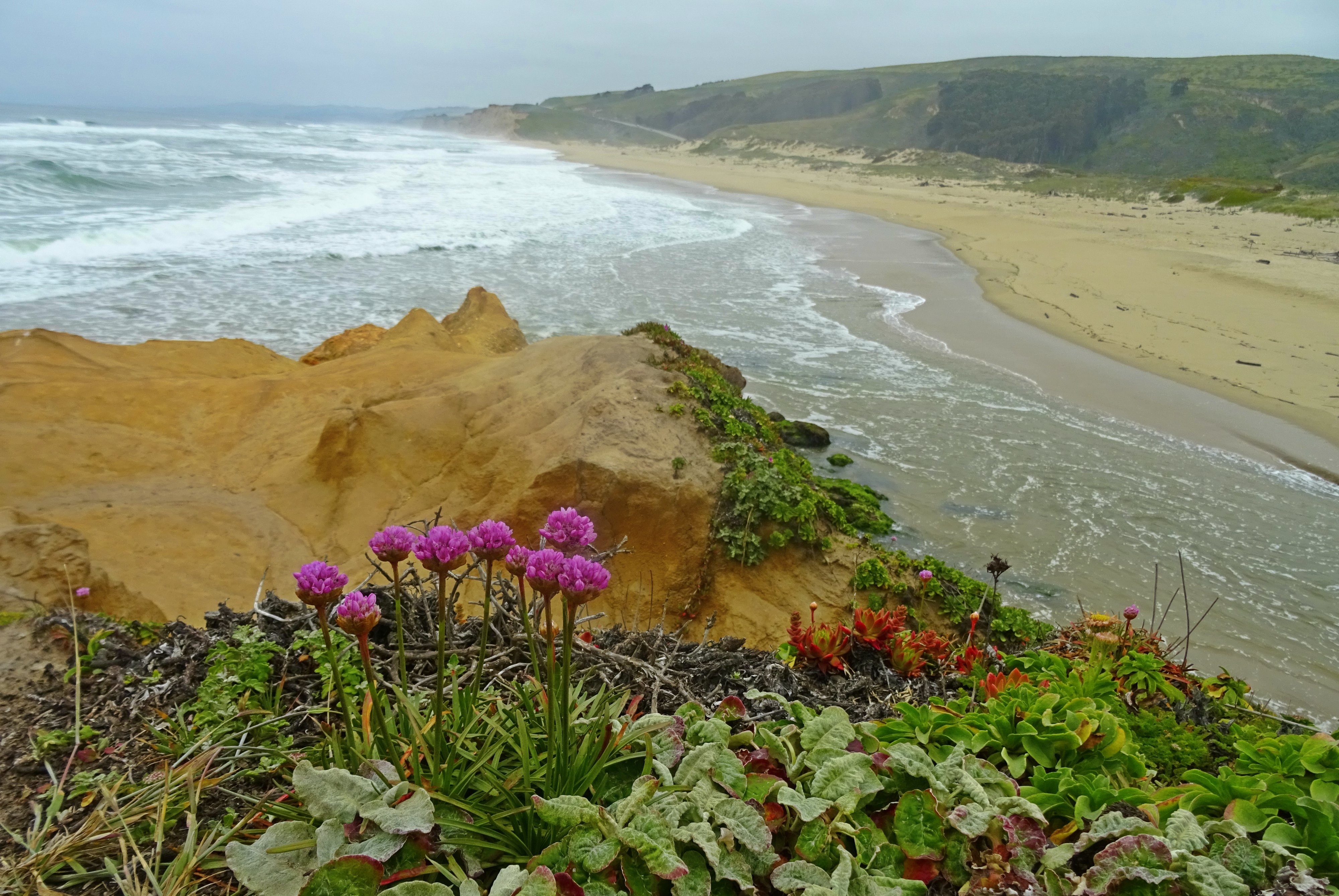|
Stångehuvud
Stångehuvud is a nature reserve in Lysekil Municipality, Västra Götaland County, Sweden. It is located on the south tip of Stångenäset peninsula, adjacent the town of Lysekil. The reserve is known for its red Bohus granite. The granite was formed about 920 million years ago and the cliffs were later shaped by the ice during the last glacial period. Formerly an area for quarrying granite, the area was bought and preserved by Calla Curman at the beginning of the 19th century. She donated it to the Royal Swedish Academy of Sciences and in 1982, the nature reserve was created. In October 2020, 100 years after Calla Curman purchased Stångehuvud, two of the roads leading up to the nature reserve were named in honour of Calla and her husband Carl. History During the second part of the 19th century, the red granite was much in demand and quarrying in Stångehuvud went on for about 50 years. Seeing that the natural cliffs were decimated by the stone industry, socialite and femini ... [...More Info...] [...Related Items...] OR: [Wikipedia] [Google] [Baidu] |
Calla Curman
Calla Curman (; 12 November 1850 – 2 February 1935) was a Swedish writer, salon-holder and feminist. She was also the founder of Stångehuvud nature reserve and one of the five founders of the women's association Nya Idun. Family Calla Lundström was born on 12 November 1850 in Jönköping, Sweden, the only child of wealthy industrialist and his wife Sofie Malmberg (1830–1897). She received in-home tutoring from a private tutor. At the age of 17, she married Adolf Liljenroth (1836–1874), a battalion physician, with whom she had two children, and . A few years after she was widowed, Lundström's parents took her on a trip to Italy. The educated Carl Curman, whom she had met on a visit with her mother to Lysekil during a few summer weeks in 1864, was invited to join them as a guide for the Italian trip. In 1877, she returned to Lysekil, then as Professor Carl Curman's guest. The following year they were married. He had worked as a spa doctor in Lysekil since 1859. With C ... [...More Info...] [...Related Items...] OR: [Wikipedia] [Google] [Baidu] |
Lysekil
Lysekil () is a Urban areas in Sweden, locality and the seat of Lysekil Municipality in Västra Götaland County, Sweden. It had about 7,600 inhabitants in 2018. Situated on the south tip of Stångenäs peninsula at the mouth of Gullmarn fjord, it has two nature reserves. Originally a small fishing village, it developed into a town for Fishing industry, fishing industries, Maritime transport, commercial shipping and trade during the 18th and 19th centuries. Stone industry based on the red Bohus granite from quarries in the town, was also vital to Lysekil up until the 1950s. One of Sweden's largest oil refineries, Preemraff Lysekil is situated outside the town. During the 19th century, Lysekil was established as a prominent seaside resort, spa and bathing resort and tourism still makes up a large part of the town's economy. History Lysekil is first mentioned in 1570. It was originally an estate belonging to Lyse farm further inland. The population lived mostly on fishing and Mari ... [...More Info...] [...Related Items...] OR: [Wikipedia] [Google] [Baidu] |
Ice Sheet
In glaciology, an ice sheet, also known as a continental glacier, is a mass of glacier, glacial ice that covers surrounding terrain and is greater than . The only current ice sheets are the Antarctic ice sheet and the Greenland ice sheet. Ice sheets are bigger than ice shelf, ice shelves or alpine glaciers. Masses of ice covering less than 50,000 km2 are termed an ice cap. An ice cap will typically feed a series of glaciers around its periphery. Although the surface is cold, the base of an ice sheet is generally warmer due to Geothermal activity, geothermal heat. In places, melting occurs and the melt-water lubricates the ice sheet so that it flows more rapidly. This process produces fast-flowing channels in the ice sheet — these are ice streams. Even stable ice sheets are continually in motion as the ice gradually flows outward from the central plateau, which is the tallest point of the ice sheet, and towards the margins. The ice sheet slope is low around the plate ... [...More Info...] [...Related Items...] OR: [Wikipedia] [Google] [Baidu] |
Solar Panel
A solar panel is a device that converts sunlight into electricity by using photovoltaic (PV) cells. PV cells are made of materials that produce excited electrons when exposed to light. These electrons flow through a circuit and produce direct current (DC) electricity, which can be used to power various devices or be stored in battery (electricity), batteries. Solar panels are also known as solar cell panels, solar electric panels, or PV modules. Solar panels are usually arranged in groups called arrays or systems. A photovoltaic system consists of one or more solar panels, an solar inverter, inverter that converts DC electricity to alternating current (AC) electricity, and sometimes other components such as charge controller, controllers, Measuring instrument, meters, and solar tracker, trackers. Most panels are in solar farms or Rooftop solar power, rooftop solar panels which grid-connected photovoltaic system, supply the electricity grid. Some advantages of solar panels are ... [...More Info...] [...Related Items...] OR: [Wikipedia] [Google] [Baidu] |
Nordisk Familjebok
(, 'Nordic Family Book') is a Swedish language, Swedish encyclopedia that was published in print from between 1876 and 1993, and that is now fully available in digital form via Project Runeberg at Linköping University. The public domain editions of the encyclopedia remain important reference works in Finland, especially on Finnish Wikipedia. History First edition began when Halmstad publisher hired an editor, linguist , in 1874 to publish a six-volume encyclopedia. Linder drew up a plan for the work, designed the editorial team and created a large circle of experts and literary figures, who submitted article proposals and wrote and reviewed them. Under Linder's direction, the articles were then edited to make them as formal, consistent and accurate as possible. Much attention was paid to Nordic subjects, mainly Swedish and Finnish, where sources and models were often lacking, so extensive and time-consuming pioneering work had to be done. As a result, the earlier plan f ... [...More Info...] [...Related Items...] OR: [Wikipedia] [Google] [Baidu] |
History Of Lighthouses
The History of Lighthouses refers to the development of the use of towers, buildings, or other types of structures as an aid to navigation for maritime pilots at sea or on inland waterways. Premodern era Before the development of clearly defined ports, mariners were guided by fires built on hilltops. Since raising the fire would improve visibility, placing the fire on a platform became a practice that led to the development of the lighthouse. In antiquity, the lighthouse functioned more as an entrance marker to ports than as a warning signal for reefs and promontories, unlike many modern lighthouses. Excavation at Kuntasi on the coast of India has revealed a square watch tower with a ramp which would have originally been 10–12 meters, used to guide boats coming to Kuntasi from Rann of Kutch. The possibility of it being a lighthouse cannot be ruled out. If so, the lighthouse would date from about 2000 BCE. Greek-Roman period According to Homeric legend, Palamedes of Nafplio inve ... [...More Info...] [...Related Items...] OR: [Wikipedia] [Google] [Baidu] |
Kerosene
Kerosene, or paraffin, is a combustibility, combustible hydrocarbon liquid which is derived from petroleum. It is widely used as a fuel in Aviation fuel, aviation as well as households. Its name derives from the Greek (''kērós'') meaning "wax"; it was registered as a trademark by Nova Scotian, Nova Scotia geologist and inventor Abraham Pineo Gesner, Abraham Gesner in 1854 before evolving into a generic trademark. It is sometimes spelled kerosine in scientific and industrial usage. Kerosene is widely used to power jet engines of aircraft (jet fuel), as well as some rocket engines in a highly refined form called RP-1. It is also commonly used as a cooking and lighting fuel, and for fire toys such as Poi (performance art)#Fire poi, poi. In parts of Asia, kerosene is sometimes used as fuel for small outboard motors or even motorcycles. World total kerosene consumption for all purposes is equivalent to about 5,500,000 barrels per day as of July 2023. The term "kerosene" is comm ... [...More Info...] [...Related Items...] OR: [Wikipedia] [Google] [Baidu] |
Calla (222982209)
''Calla'' is a genus of flowering plant in the family Araceae, containing the single species ''Calla palustris'' (bog arum, marsh calla, wild calla, squaw claw, and water-arumDickinson, T.; Metsger, D.; Bull, J.; & Dickinson, R. (2004) ROM Field Guide to Wildflowers of Ontario. Toronto:Royal Ontario Museum, p. 62.). Description It is a rhizomatous herbaceous perennial plant growing in bogs and ponds. The leaves are rounded to heart-shaped, long on a petiole, and broad. The greenish-yellow inflorescence is produced on a spadix about long, enclosed in a white spathe. The fruit is a cluster of red berries, each berry containing several seeds. The plant is very poisonous when fresh due to its high oxalic acid content, but the rhizome (like that of ''Caladium'', ''Colocasia'', and ''Arum'') is edible after drying, grinding, leaching and boiling. Taxonomy The genus formerly also included a number of other species, which have now been transferred to the separate genus ''Zant ... [...More Info...] [...Related Items...] OR: [Wikipedia] [Google] [Baidu] |
Sea Thrift
''Armeria maritima'', the thrift, sea thrift or sea pink, is a species of flowering plant in the family Plumbaginaceae. It is a compact evergreen perennial which grows in low clumps and sends up long stems that support globes of bright pink flowers. In some cases purple, white or red flowers also occur. It is a popular garden flower and has been distributed worldwide as a garden and cut flower. It does well in gardens designed as xeriscapes or rock gardens. The Latin specific epithet ''maritima'' means pertaining to the sea or coastal. Subspecies 12 subspecies are accepted. * ''Armeria maritima'' subsp. ''azorica'' – Azores *''Armeria maritima'' subsp. ''barcensis'' – central Romania (near Brasov) *''Armeria maritima'' subsp. ''bottendorfensis'' – central Germany (Bottendorfer Hügel) * ''Armeria maritima'' subsp. ''californica'' – California Seapink – west coast of North America from Vancouver Island to California *''Armeria maritima'' subsp. ''elongata'' – Ta ... [...More Info...] [...Related Items...] OR: [Wikipedia] [Google] [Baidu] |
Vascular Plant
Vascular plants (), also called tracheophytes (, ) or collectively tracheophyta (; ), are plants that have lignin, lignified tissues (the xylem) for conducting water and minerals throughout the plant. They also have a specialized non-lignified Tissue (biology), tissue (the phloem) to conduct products of photosynthesis. The group includes most embryophyte, land plants ( accepted known species) excluding mosses. Vascular plants include the clubmosses, Equisetum, horsetails, ferns, gymnosperms (including conifers), and angiosperms (flowering plants). They are contrasted with nonvascular plants such as mosses and green algae. Scientific names for the vascular plants group include Tracheophyta, Tracheobionta and Equisetopsida sensu lato, Equisetopsida ''sensu lato''. Some early land plants (the rhyniophytes) had less developed vascular tissue; the term eutracheophyte has been used for all other vascular plants, including all living ones. Historically, vascular plants were known as "hi ... [...More Info...] [...Related Items...] OR: [Wikipedia] [Google] [Baidu] |





